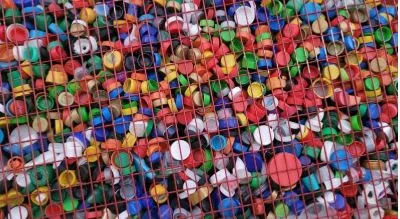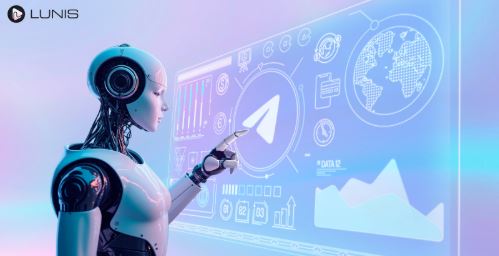What Happens to Recycled Plastic? From Waste to New Products
Recycling plastic has become second nature for many people. You finish a drink, rinse the bottle, and toss it into the blue bin, assuming it will be reborn as something new. But have you ever wondered what actually happens to that plastic after it leaves your curb?
The truth is more complicated than most people realize. While some plastics do get successfully recycled and turned into useful new products, a significant portion doesn’t. Some end up incinerated, landfilled, or even dumped in countries without proper waste management systems. This article will walk you through the real-life journey of recycled plastic, explain where the system breaks down, and show you what you can do to help improve outcomes.
Let’s follow the path of plastic, from waste to new products.
Step 1: Collection and Sorting
The recycling journey begins with collection. Depending on where you live, this might mean putting plastic items in a curbside recycling bin, bringing them to a local drop-off center, or participating in a community recycling program. Once collected, the materials are sent to a facility known as a Materials Recovery Facility (MRF).
At the MRF, plastics are sorted based on type and sometimes color. This sorting process is crucial. Different types of plastic, like PET (polyethylene terephthalate) used in soda bottles or HDPE (high-density polyethylene) found in milk jugs have unique properties and must be processed separately. Sorting can be done manually or with advanced machines that use infrared scanners to identify the type of plastic.
Unfortunately, this is also where problems often start. Plastic waste is frequently contaminated with food, grease, or other non-recyclable materials. Items made of mixed materials (such as a plastic-coated paper cup) may also be rejected because they are difficult or impossible to recycle. In many cases, improperly sorted or contaminated plastic is diverted to landfills or incinerators rather than being recycled.
Step 2: Cleaning and Shredding
Once plastics have been sorted, the next step is cleaning. This involves removing any labels, adhesives, dirt, or leftover food. Cleanliness is essential to ensure the plastic can be reused effectively. If the material is too dirty, it can ruin an entire batch of recyclables.
After cleaning, the plastic is shredded into small flakes or chips. These flakes are easier to handle and help prepare the plastic for melting and reformation. This stage is critical to ensuring the quality of the final recycled product. The more thoroughly the plastic is cleaned and shredded, the better the end result.
Step 3: Melting and Pelletizing
Following shredding, the plastic flakes are melted down. This process involves heating the flakes to their melting point so they can be molded or extruded into a new form. During this process, filters are often used to remove any lingering contaminants or unwanted materials.
The molten plastic is then extruded into long strands and chopped into small pieces called pellets. These pellets, also known as nurdles, serve as the raw material for creating new plastic products. They are easy to store, transport, and manufacture with, making them the standard input for plastic product manufacturing.
Step 4: Manufacturing New Products
Now that the plastic has been transformed into pellets, it is ready to become something new. Manufacturers can use recycled plastic pellets to make a wide variety of products. Some common uses include:
- Packaging such as bottles, jars, and containers
- Textiles like polyester clothing and carpeting
- Construction materials including plastic lumber and piping
- Automotive components such as dashboards and seat padding
- Household goods like buckets, bins, and furniture
Recycled plastic is incredibly versatile. However, it is not without its limitations. Plastics degrade in quality each time they are recycled. This is known as “downcycling,” and it means that plastic cannot be recycled indefinitely. Additionally, recycled plastic may not always meet the safety standards required for food packaging unless it goes through a rigorous purification process.
What Doesn’t Get Recycled, And Why
Despite all the effort that goes into recycling, a large percentage of plastic waste never makes it through the process. In many cases, plastic is collected with the intention of being recycled but ends up being burned for energy, landfilled, or even exported to other countries.
Some types of plastic are simply not economically viable to recycle. If the market demand for a specific type of recycled plastic is low, facilities may choose not to process it. In other cases, plastics are too contaminated to be used or are made from mixed materials that are difficult to separate.
Much of the plastic exported to other countries ends up in regions without the infrastructure to manage it responsibly. There, it may be burned in open pits or dumped into rivers and oceans, contributing to global pollution.
This mishandling doesn’t just harm the environment. It can affect human health too. If you’re wondering how does plastic pollution affect humans, the answer lies in toxic chemical exposure, microplastics in our food and water, and the burden placed on low-income communities living near waste processing sites.
Organizations like TONTOTON are working to address this issue by targeting non-recyclable, ocean-bound plastic. TONTOTON partners with communities to collect plastic that would otherwise pollute the environment and disposes of it safely through certified, impact-driven programs.
Environmental Impact of Plastic Recycling
Recycling plastic does offer clear environmental benefits, though it’s not a perfect solution.
Positive Impacts:
- Reduces demand for virgin plastic, which is made from fossil fuels
- Conserves energy, as recycling uses less energy than producing new plastic
- Keeps plastic out of landfills and oceans, reducing environmental damage
- Supports a circular economy, where materials are reused rather than discarded
Limitations and Challenges:
- Quality degrades each time plastic is recycled
- Contamination can ruin entire batches of recyclable material
- Not all plastics are recyclable, especially single-use items
- Energy is still required to process and transport recycled materials
Plastic recycling is a valuable tool, but it is not a catch-all solution. A comprehensive approach that includes reduction, reuse, and responsible disposal is essential for long-term sustainability.
How You Can Help
You don’t have to overhaul your entire lifestyle to make a difference. There are practical steps everyone can take to improve plastic recycling outcomes.
- Rinse your containers before recycling to remove food and residue
- Don’t mix materials like plastic and metal, which can disrupt the sorting process
- Learn your local recycling rules, since they vary by region
- Choose products made from recycled materials to support market demand
- Reduce your use of single-use plastics, such as straws, bags, and utensils
One powerful tool for creating change is increasing public awareness of plastic pollution. Education helps people understand the full scope of the problem and inspires more responsible behavior, both at the individual and policy levels.
You can also support initiatives that address plastic waste beyond the traditional recycling model. TONTOTON offers a certified way to offset your plastic footprint by recovering and safely managing ocean-bound plastic that cannot be recycled. It’s a practical way for individuals and businesses to contribute to a cleaner planet.
Conclusion
So, what happens to recycled plastic? In the best-case scenario, it goes through a well-orchestrated process of sorting, cleaning, melting, and reformation, eventually becoming something useful again. In the worst case, it ends up incinerated, buried, or polluting the environment.
Recycling is part of the solution, but it is not the whole answer. We need stronger systems, better education, and more accountability. We also need to rethink how we use plastic in the first place.
The next time you toss a plastic bottle into the recycling bin, think about the entire journey it might take. By being more informed and intentional, we can each play a role in turning plastic waste into opportunity, not pollution.





